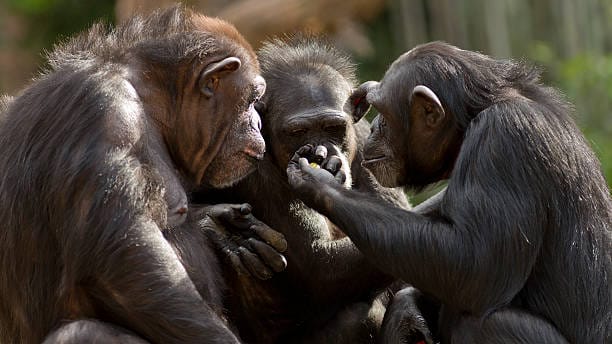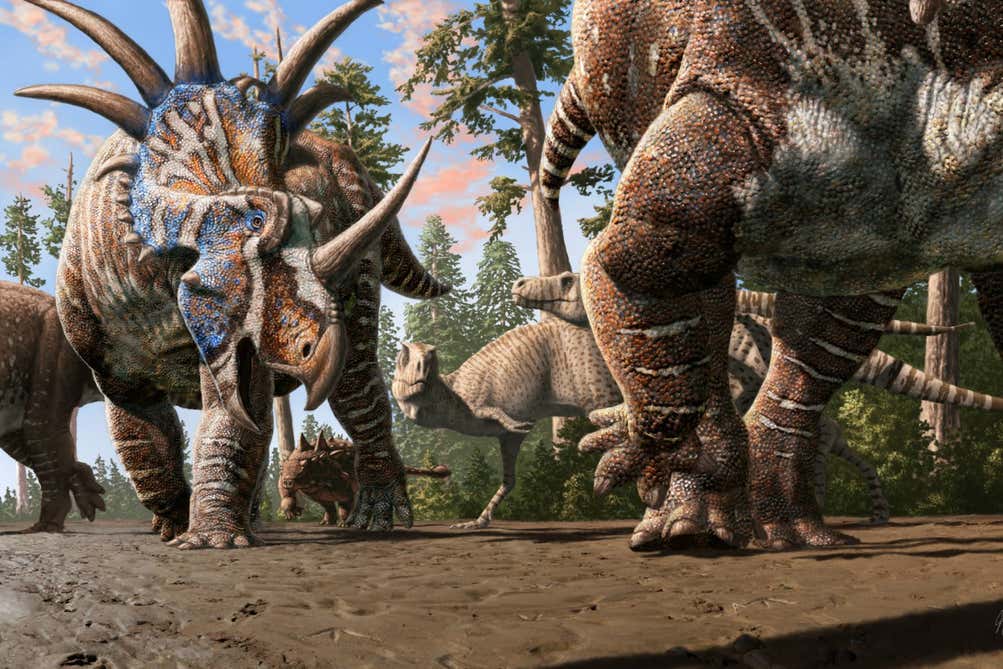In the thick of the Amazon rainforest, a howler monkey bellows into the canopy, its deep call resonating for miles. Beneath the ocean surface, a humpback whale releases a haunting song that can travel across entire ocean basins. High in the skies, a songbird mimics not only the songs of its peers but also the sounds of other species, even human-made noises. From ants exchanging chemical trails on the forest floor to bees dancing in choreographed spirals to indicate food sources, the animal kingdom is alive with communication. Not just noise, not just instinct—these are messages, questions, commands, and expressions, conveyed through sight, sound, touch, smell, and even electric fields.
Animal communication, once dismissed as primitive and reflexive, is now recognized as a sophisticated system of information exchange. Scientists around the world are beginning to decode the rich and varied languages of animals, revealing that communication is not the exclusive domain of human beings. Rather, it is a fundamental, ancient trait—woven into the fabric of life itself.
What Is Animal Communication?
At its core, communication in animals is the transmission of a signal from one individual to another, producing some kind of response. Unlike mere behavior, communication involves intentionality—or at least evolved specificity. A bird’s alarm call is not just noise; it warns others of danger. A dog’s tail wag isn’t always a sign of joy; the position and motion carry different meanings. Whether through vibrations, scents, movements, or sounds, animals across the globe are constantly exchanging information vital to their survival and social organization.
Scientific understanding of this communication is built on decades of observation, experimentation, and technological innovation. Researchers use everything from high-frequency microphones and infrared cameras to machine learning algorithms and neural implants to uncover what animals are truly saying—and perhaps more importantly, how they say it and why.
Sound: The Language of the Air
Few forms of animal communication are as evocative or as widely studied as vocalization. From the rhythmic croaks of frogs to the elaborate songs of whales and birds, acoustic communication enables messages to travel over long distances, through dense environments, and at rapid speeds.
Birdsong is one of the most complex and expressive examples. Songbirds learn their songs in a manner astonishingly similar to how humans acquire language—through listening, imitation, and practice. Certain species, like the zebra finch, show clear stages of vocal learning: a sensory phase, where they listen and memorize songs, followed by a sensorimotor phase, where they begin to vocalize and refine their output. These processes are controlled by specialized regions in the avian brain, many of which have human analogs.
Whales and dolphins, members of the cetacean family, take this complexity underwater. Humpback whales sing in intricate, changing patterns that can last for hours. Each population has its own song dialect, and these songs evolve seasonally, almost like musical memes passed across individuals and generations. Dolphins, meanwhile, use signature whistles—acoustic identifiers akin to names. When separated, they call each other specifically, suggesting not just recognition but possibly self-awareness.
Even the simplest creatures can communicate using sound. Crickets produce rhythmic chirps by rubbing their wings, each pattern carrying different meanings: a mating call, a challenge, a sign of distress. Bats use echolocation to “see” their environment, but recent studies reveal they also modulate their calls to communicate socially, perhaps warning others or asserting dominance.
Scent and Pheromones: The Invisible Language
Where sound dominates in birds and mammals, smell reigns supreme in insects and many mammals. Chemical signals, or pheromones, are used to convey everything from reproductive status to danger alerts and social hierarchies.
Ants, for example, create sophisticated networks using pheromone trails. When an ant finds food, it lays a chemical trail on its return to the colony, guiding others to the source. The more ants follow the path, the stronger the trail becomes, reinforcing the signal in a positive feedback loop. This decentralized yet efficient system underpins much of ant society, allowing complex foraging and territorial behaviors with no central control.
Mammals, too, rely heavily on scent. Wolves mark territory with urine, not just to indicate presence but to convey information about the individual’s health, dominance, and breeding status. Dogs can interpret an entire story from a few molecules of scent. Elephants, among the most emotionally intelligent animals, can detect chemical signals related to family recognition, mating readiness, and stress.
Humans often overlook olfactory communication, having evolved to prioritize vision and hearing. Yet in many animals, the nose knows more than any other sense.
Movement and Gesture: Silent Dialogues
Not all communication is vocal or chemical. Many species convey meaning through posture, movement, and body language. These visual signals can be subtle or dramatic, conveying emotions, intentions, or social bonds.
One of the most famous examples is the honeybee waggle dance. Discovered by Karl von Frisch in the 20th century, this dance allows a bee to communicate the direction and distance of a food source relative to the sun. The angle of the waggle corresponds to the direction, while the duration reflects the distance. This abstract representation of space—a symbolic communication—was once thought to be uniquely human.
Primates, including chimpanzees and gorillas, use a rich repertoire of gestures. A raised arm, a beckoning hand, or a certain facial expression can initiate play, express aggression, or seek grooming. Some gestures appear to be culturally transmitted, varying across populations. Recent research has shown that apes understand each other’s gestures with remarkable consistency, suggesting that these signals are part of an evolved communication system, not merely spontaneous behavior.
In the underwater world, cephalopods like cuttlefish and octopuses employ color changes and skin patterns as visual language. Using specialized cells called chromatophores, they can flash warning signals, mimic their surroundings, or indicate readiness to mate. These patterns are fast, precise, and often coordinated with posture and arm movement, forming a multimedia display more advanced than many realize.
Tactile Communication: The Power of Touch
Touch is perhaps the most intimate form of communication. It conveys not only information but emotion, forging bonds that go beyond mere survival.
In social mammals such as elephants, grooming, trunk entwining, and physical reassurance are crucial for maintaining group cohesion. A grieving elephant may touch the bones of a deceased relative or stand vigil for hours—behavior that seems to transcend mere instinct.
Primates, especially chimpanzees and bonobos, use grooming not only for hygiene but for alliance-building and emotional regulation. Grooming reduces cortisol levels, calms aggression, and reinforces trust. Among bonobos, sexual contact is used in a similar way—to defuse tension, cement alliances, and express affection.
Even insects communicate via touch. Tactile signals in ant colonies help coordinate tasks, while tactile cues in bees assist in orientation inside the dark hive. Spiders may tap and vibrate webs to signal their presence to potential mates, avoiding miscommunication that could end in fatal misinterpretation.
The Role of Environment and Evolution
Communication does not occur in a vacuum. It is shaped by ecological pressures, sensory capacities, and social needs. The dense foliage of a rainforest favors sound over sight; open plains invite visual signals. Nocturnal creatures evolve to rely more on scent or touch. Aquatic animals may use electrical pulses or hydrodynamic vibrations invisible to us but vivid to them.
Natural selection favors communication systems that enhance survival and reproductive success. Honest signals—those that cannot be faked—tend to dominate, especially in mating and dominance displays. A lion’s roar, a peacock’s tail, or a frog’s deep croak all signal strength, but also cost energy or risk exposure to predators. These costs ensure that the signals remain reliable.
At the same time, deception exists in nature. Some animals fake distress to lure predators away from their young. Others mimic harmless species to avoid predation. The arms race between signalers and receivers drives innovation in animal communication, making it one of the most dynamic arenas of evolutionary biology.
Intelligence and Intentionality
One of the central debates in animal communication is whether animals truly intend to communicate in a human-like sense. Do they understand what they’re doing, or are they simply reacting to stimuli?
Recent research leans increasingly toward recognizing intentionality, at least in some species. Primates modify their gestures based on whether the recipient is watching. Dolphins take turns in vocal play, indicating a grasp of conversational rules. Parrots use words they’ve learned to ask for objects, actions, or people. A famous African grey parrot named Alex could count, identify colors, and even express frustration or affection—suggesting more than rote mimicry.
Moreover, wild animals are learning to communicate with humans. Some dogs understand hundreds of words and gestures. Horses read human facial expressions. Wild birds have been observed adapting their calls to avoid urban noise. This plasticity and learning capacity hint at a deeper cognitive substrate beneath animal communication—one that may mirror the precursors of human language.
The Roots of Human Language
Understanding animal communication also sheds light on the evolution of human language. Our speech did not emerge from nothing—it evolved from simpler systems of gesture, sound, and symbol, many of which persist in our primate cousins.
The FOXP2 gene, implicated in human speech and language, has analogs in birds, bats, and even fish—indicating a deep evolutionary history of vocal learning. Brain studies show overlapping regions for language and music, suggesting that rhythm and melody may have formed the scaffolding of speech. Gestural theories propose that manual communication came before vocal language, supported by studies of signing apes and human infants.
Language may be humanity’s greatest invention—but it was not born in isolation. It is part of a continuum, and animals occupy many steps along that evolutionary ladder.
Challenges in Interpretation
Despite incredible advances, interpreting animal communication remains a challenge. Many signals are ambiguous, context-dependent, or embedded in behaviors that are hard to replicate in the lab. The anthropocentric bias—interpreting animal signals through a human lens—can lead to errors or misrepresentations.
To counter this, scientists increasingly combine behavioral observation with bioacoustics, machine learning, and even brain imaging. Neural decoding in birds and primates allows researchers to correlate brain activity with specific vocalizations or gestures. Artificial intelligence is now being trained to identify patterns in whale songs or elephant rumbles that elude human perception.
Still, caution is warranted. Animals may not think or express themselves like us—but that does not make their communication any less rich, meaningful, or vital.
The Future: Talking with Animals?
Could we one day have meaningful conversations with other species? It may sound like science fiction, but efforts are underway to build “interspecies translators” using artificial intelligence. Projects like Earth Species Project and CETI (Cetacean Translation Initiative) aim to decipher the vocalizations of whales and dolphins using machine learning and signal analysis.
If successful, these initiatives could revolutionize not only science but ethics. Understanding animal communication more fully might compel us to reevaluate how we treat non-human life. Intelligence, emotion, and language are no longer traits we can safely claim as ours alone.
A Final Thought: A World Awash in Voices
Animal communication is not just a subject of academic interest—it is a window into the living, breathing minds that share our planet. In every forest, savanna, ocean, and sky, voices echo in a thousand dialects. They mourn, rejoice, court, command, warn, comfort, and deceive. They are not our voices, but they are not voiceless.
As we deepen our understanding of animal communication, we do more than learn about other species. We learn humility, wonder, and connection. We learn that life speaks in myriad ways, and that to listen—to truly listen—is perhaps the greatest act of respect we can offer.






